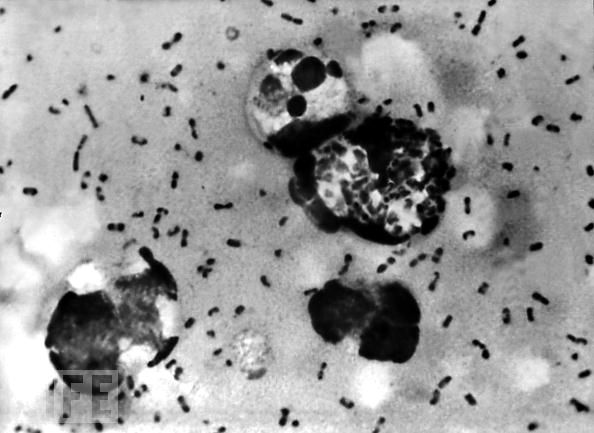Anthrax:
Anthrax is a disease that is formed by Bacillus anthracis, which is a bacterium that forms spores that are asleep and may come to life in the right conditions. The three different types of anthrax are the skin cutaneous, the lungs inhalation, and the digestive gastrointestinal. The spread of Anthrax is known for being carried from one person to another, but is most likely to be spread by animals and weapons. The spread of Anthrax through animals can be caused by handling or breathing products of infected animals, and by eating undercooked infected meat from animals. The spread of Anthrax through a weapons are caused by a deliberate sending of the disease, such as in 2001 when the U.S. Postal service was sending letters containing a powdery Anthrax, that caused 22 different infections. Anthrax is classified as a category “A” agent from the Centers for Disease Control and Prevention, because Anthrax can be spread in a large area, poses the greatest possible threat on public health, and needs a great deal of planning to protect the public. When early treatment is done for Anthrax infections, eighty percent of the people infected by Anthrax usually live, while when not treated early about only one fourth to one half the cases infected do not live, just like in the 2001 postal service epidemic, that had half the cases of anthrax being fatal. The symptoms of Anthrax can appear within seven days from coming in contact with the disease, but can also take as long as forty two days to appear. The vaccine for anthrax is not yet available to the public, but will be sure to be available if people are exposed to an attack in the future.
Pneumonic plague:
Pneumonic plague is a disease that occurs when Y. pestis infects the lungs. The plague is spread from person to person and is transmitted by the air, or by someone breathing in a aerosolized bacteria, which often happens in a bioterrorist attack. The plague is also spread by breathing in Y. pestis in the form of respiratory droplets from a person with the disease. A person can be infected by the plague if they are in close contact with an ill person or animal. Pneumonic plague may occur if a person with the other two plagues bubonic or septicemic, is untreated with the bacteria spreading to the lungs. |
|
Brucellosis: Brucellosis
is a bacteria caused disease form from the bacteria of the genus
Brucella. The bacteria is passed among animals, which cause
numerous different diseases.The animals that carry the
disease are sheep, goats, cattle, deer, elk, pigs, dogs, and others.
The disease infects humans by people coming in contact with animals
that are contaminated with the bacteria. Brucellosis can cause a
range of symptoms that can be mistaken for the flu, which include
fever, sweats, headaches, back pains, and physical weakness.
Brucellosis is not a well known disease in the United States with
only 100 to 200 cases occurring every year, but Brucellosis occurs
more commonly in countries without disease control programs for
animals, which leads to people being more susceptible to the disease. The disease can be transmitted by eating or drinking something that is contaminated by brucella, or having the disease enter the body through wounds in the skin. |

.jpg)
